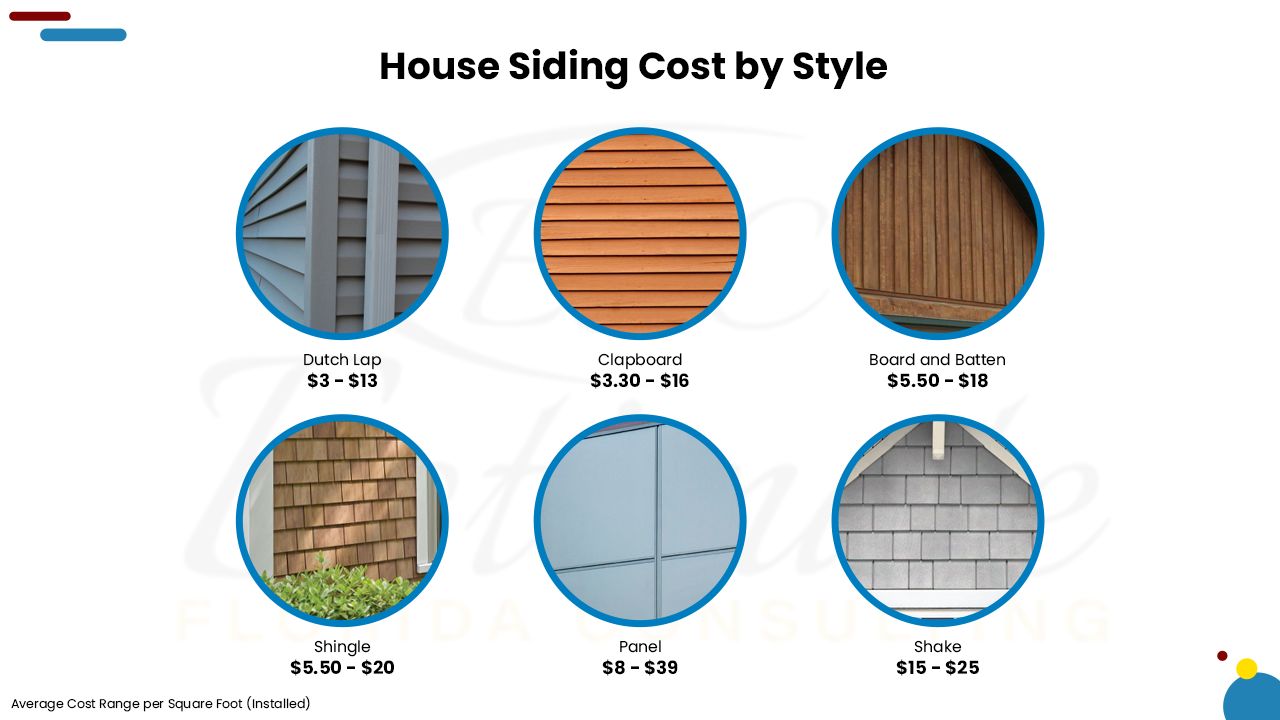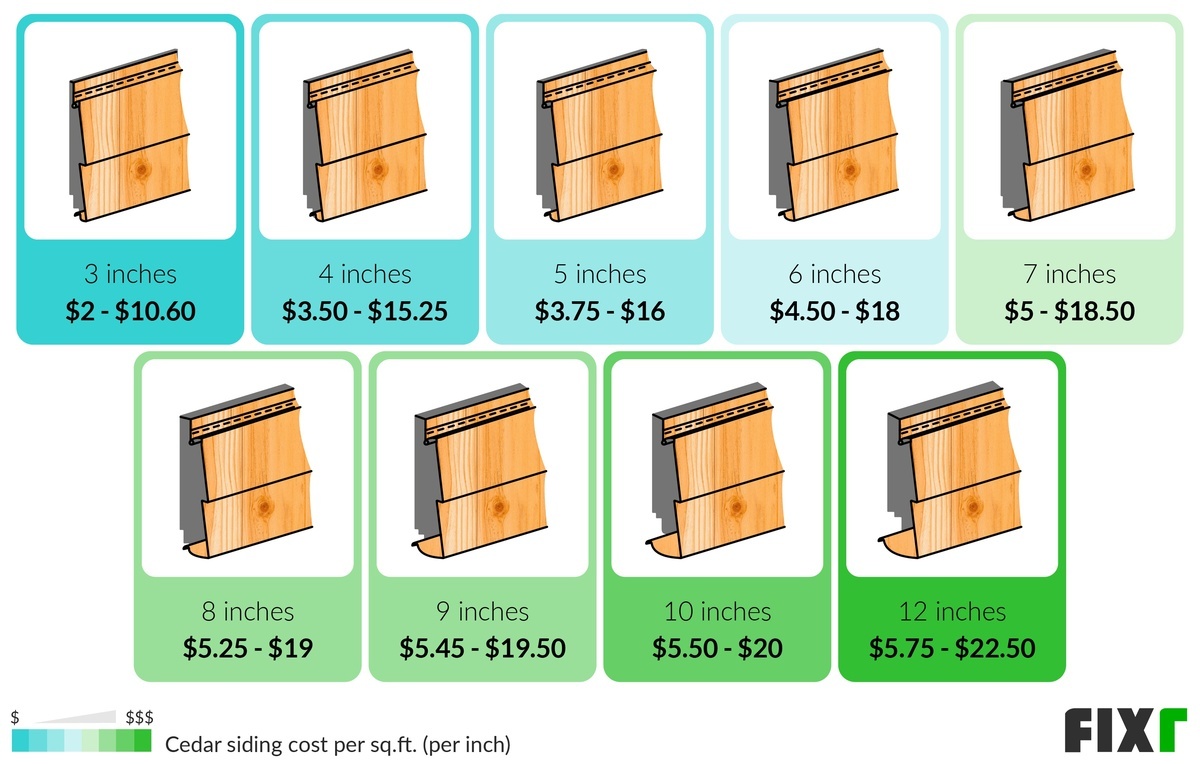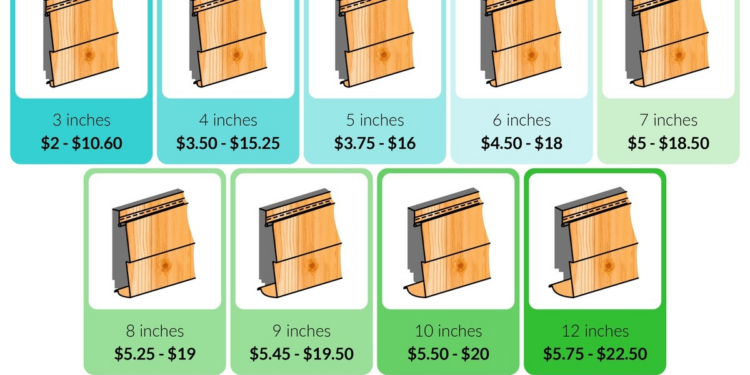Delving into the realm of siding costs per square foot installed, this piece sets the stage for a deep dive into the intricacies of pricing, materials, and installation methods. Get ready to uncover valuable insights and expert tips in this engaging exploration.
Exploring the various factors that influence the cost of siding per square foot installed, this guide offers a comprehensive look at the key elements that impact pricing decisions.
Factors influencing the cost of siding per square foot installed
When considering the cost of siding per square foot installed, several factors come into play that can influence the overall price. Understanding these factors is crucial for homeowners looking to undertake a siding project.
Types of siding materials
Different types of siding materials have varying costs associated with them. Some common options include:
- Vinyl siding: Vinyl is a popular choice due to its affordability and low maintenance requirements. It is one of the most cost-effective options available.
- Fiber cement siding: Fiber cement is a durable material that offers excellent protection against the elements. It is more costly than vinyl but provides a higher level of quality and longevity.
- Wood siding: Wood siding has a natural, rustic look but tends to be more expensive than other materials. The cost can vary depending on the type of wood used.
Quality and thickness of siding
The quality and thickness of the siding material can significantly impact the cost per square foot. Higher-quality materials and thicker siding panels will generally cost more upfront but may provide better durability and longevity in the long run.
Role of labor costs
Labor costs play a significant role in determining the overall price of siding installation. Hiring professional installers can add to the total cost, but it ensures that the siding is properly installed, which can prevent future issues and repairs.
DIY installation versus professional installation
While opting for a do-it-yourself approach may seem cost-effective initially, it's essential to consider the potential risks and challenges involved. DIY installation can lead to mistakes, which may end up costing more in the long term. Professional installation, although more expensive, can provide peace of mind and ensure a high-quality finish.
Average cost range for siding per square foot installed

When it comes to the average cost range for siding per square foot installed, it is essential to consider the various siding materials available in the market. The cost can vary significantly based on the type of material chosen, the quality of the material, and the complexity of the installation process.
Additionally, factors such as location and regional price differences can also impact the overall cost.
Breakdown of Typical Price Range for Various Siding Materials
- Vinyl Siding: On average, vinyl siding can cost between $3 to $7 per square foot installed. It is one of the most cost-effective options available.
- Fiber Cement Siding: The average cost for fiber cement siding ranges from $5 to $12 per square foot installed. It is known for its durability and low maintenance.
- Wood Siding: Wood siding can cost anywhere from $6 to $15 per square foot installed. The price can vary depending on the type of wood used.
- Brick Siding: Brick siding tends to be on the higher end of the price spectrum, ranging from $8 to $15 per square foot installed. It offers a classic and timeless look.
Impact of Location and Regional Price Variations
When considering the cost of siding per square foot installed, it is important to factor in location and regional price differences. Prices can vary based on the cost of living in a particular area, availability of materials, and local labor rates.
For example, urban areas may have higher labor costs compared to rural areas, which can influence the overall price of the installation.
Additional Costs Involved in the Installation Process
- Removal and Disposal: The cost of removing old siding and disposing of it properly can add to the total installation cost.
- Preparation Work: Any necessary repairs or preparation work to the existing structure before installing new siding may incur additional costs.
- Trim and Finish: Adding trim and finishing touches to the siding installation can increase the overall cost.
- Permits and Inspections: Depending on local regulations, obtaining permits and scheduling inspections may involve extra fees.
Cost-saving tips for siding installation
When it comes to saving money on siding installation, there are several strategies you can employ to lower costs and maximize your budget. From negotiating with contractors to purchasing materials in bulk, there are various ways to keep the overall expenses down.
Additionally, focusing on energy efficiency and proper maintenance can help reduce long-term costs and extend the lifespan of your siding.
Negotiating with contractors
- Obtain multiple quotes from different contractors to compare prices and services.
- Ask if there are any discounts available for bundling services or scheduling during off-peak seasons.
- Consider negotiating the labor costs or asking for a lower price if you are providing some materials yourself.
Purchasing materials in bulk
- Buy materials in larger quantities to take advantage of bulk discounts offered by suppliers.
- Coordinate with your contractor to determine the exact amount of materials needed to avoid over-ordering.
- Look for promotions or deals on siding materials to further reduce costs.
Maximizing energy efficiency
- Choose energy-efficient siding materials that can help reduce heating and cooling costs over time.
- Consider adding insulation under the siding to improve the overall energy efficiency of your home.
- Seal any gaps or cracks in the siding to prevent air leaks and improve insulation.
Proper maintenance for prolonging lifespan
- Regularly clean the siding to prevent dirt and debris buildup that can damage the material over time.
- Inspect the siding for any signs of damage or wear and tear, and address issues promptly to avoid costly repairs.
- Repaint or refinish the siding as needed to protect it from the elements and extend its lifespan.
Comparing different siding materials in terms of cost and durability

When it comes to choosing the right siding material for your home, it's essential to consider both the upfront costs and the long-term durability of the options available. Different materials come with varying price tags and maintenance requirements, so making an informed decision is crucial for the overall value of your investment.
Vinyl Siding
Vinyl siding is a popular choice due to its affordability and low maintenance requirements. It has a moderate upfront cost, making it budget-friendly for many homeowners. With proper care, vinyl siding can last up to 30 years, providing good value for the cost.
Fiber Cement Siding
Fiber cement siding is known for its durability and resistance to harsh weather conditions. While it has a higher upfront cost compared to vinyl, it offers excellent long-term durability, with a lifespan of 50 years or more. The maintenance requirements are relatively low, making it a cost-effective option in the long run.
Wood Siding
Wood siding has a classic look and adds warmth to a home's exterior. However, it comes with a higher upfront cost and requires more maintenance compared to vinyl and fiber cement. With proper care, wood siding can last 20-40 years, depending on the type of wood used.
While it offers aesthetic appeal, it may not be the most cost-effective option in terms of longevity.
Metal Siding
Metal siding, such as aluminum or steel, is durable and resistant to pests and rot. It has a moderate upfront cost and requires minimal maintenance, making it a practical choice for many homeowners. Metal siding can last 40-50 years or more, providing good value for the cost over time.
Conclusion
When comparing different siding materials, it's essential to consider the upfront costs, lifespan, maintenance requirements, and long-term durability. While each material has its own pros and cons, fiber cement and metal siding often offer the best value for the cost, combining durability, longevity, and minimal maintenance needs.
Closing Summary

Wrapping up our discussion on the cost of siding per square foot installed, we've covered essential information to guide your decision-making process. Whether you're a seasoned homeowner or a first-time buyer, understanding these nuances can help you make informed choices and optimize your investment.
FAQ Insights
What are the best siding materials for cost efficiency?
Answer: Vinyl and fiber cement are popular choices for cost-effective siding that offers durability and aesthetic appeal.
Is DIY siding installation significantly cheaper than hiring professionals?
Answer: While DIY installation can save on labor costs, it's important to consider the expertise required and potential risks of errors that could lead to additional expenses.
How can energy efficiency impact the long-term cost of siding?
Answer: Opting for energy-efficient siding materials can lower utility bills over time, offsetting the initial investment through savings on heating and cooling costs.


